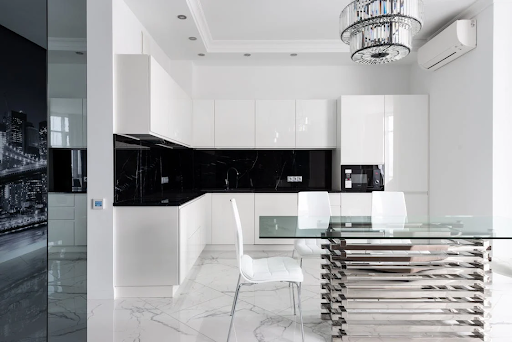Comfort and health depend on a controlled indoor temperature all year long. Extreme temperatures—either too hot or too cold—can make living quarters unpleasant and cause health problems. Finding the ideal balance calls for a mix of effective temperature control, air quality management, and seasonal house adjustments, not only changing your thermostat. Understanding how to maximise your indoor environment helps you guarantee year-round comfort independent of the outside temperature.
Consistently investing in professional air conditioning services is crucial for maintaining a stable interior temperature. A properly maintained heating and cooling system guarantees your house is pleasant all year. Frequent maintenance helps avoid inefficiencies such as system failures or clogged filters, which could cause uneven temperatures and increased energy expenses. Keeping your air conditioning system in perfect shape will help preserve a consistent indoor temperature without needless energy use.
Modelling your home for seasonal changes
Maintaining indoor comfort depends heavily on seasonal changes. Minimising heat buildup inside the house is crucial in the warmer months. Simple techniques such as closing curtains during peak sunshine hours, using reflecting window coverings, and improving natural ventilation help maintain home temperatures at tolerable levels. Ceiling fans also increase air circulation and guarantee equal cool air distribution throughout the house.
Conversely, during the colder months, heat retention becomes crucial. To prevent heat loss, insulate windows and doors, hang thick drapes, and close gaps at access points. Moreover, turning ceiling fans clockwise at a low speed forces warm air downward, improving the space’s cosiness without depending on heating systems. Additionally, little adjustments like adding area rugs and layering materials help create a warmer and more pleasant indoor environment.
Preserving ideal indoor air quality
Maintaining adequate air quality is as important as temperature management in reaching the ideal interior climate. Poor ventilation, high humidity, and airborne pollutants can compromise indoor air quality, causing discomfort and possibly health problems. Proper ventilation is the main way to prevent stale air from building up within the house. Periodically opening windows, particularly in milder temperatures, helps clear inside air and lower stored contaminants.
Keeping a healthy indoor temperature also depends critically on humidity regulation. While low humidity can aggravate respiratory conditions and dry skin, high humidity levels can provide a home for mould and bacteria. Using a dehumidifier in high-humidity circumstances and a humidifier during dry seasons will assist in controlling moisture levels, therefore guaranteeing a better home environment.
Energy-efficient strategies for year-round comfort
Maintaining a pleasant home all year long does not have to mean paying outrageous energy expenses. Energy-efficient solutions can help control indoor temperature and lower total energy use. Smart thermostats let homeowners tailor temperature settings based on daily activities, avoiding needless heating or cooling while nobody is home.
Better climate control can also come from upgrading important portions of the house to energy-efficient windows and insulation. Regular air conditioning services help to ensure that your HVAC system is kept in good condition, preventing system overuse, extending its lifetime, and lowering the demand for expensive repairs or replacements.
Conclusion
Seasonal changes, air quality control, and energy-efficient techniques taken together will produce the ideal indoor temperature for each season. Using proactive house care and temperature management, you can guarantee that your living environment stays comfortable, efficient, and fit for general well-being all year.

